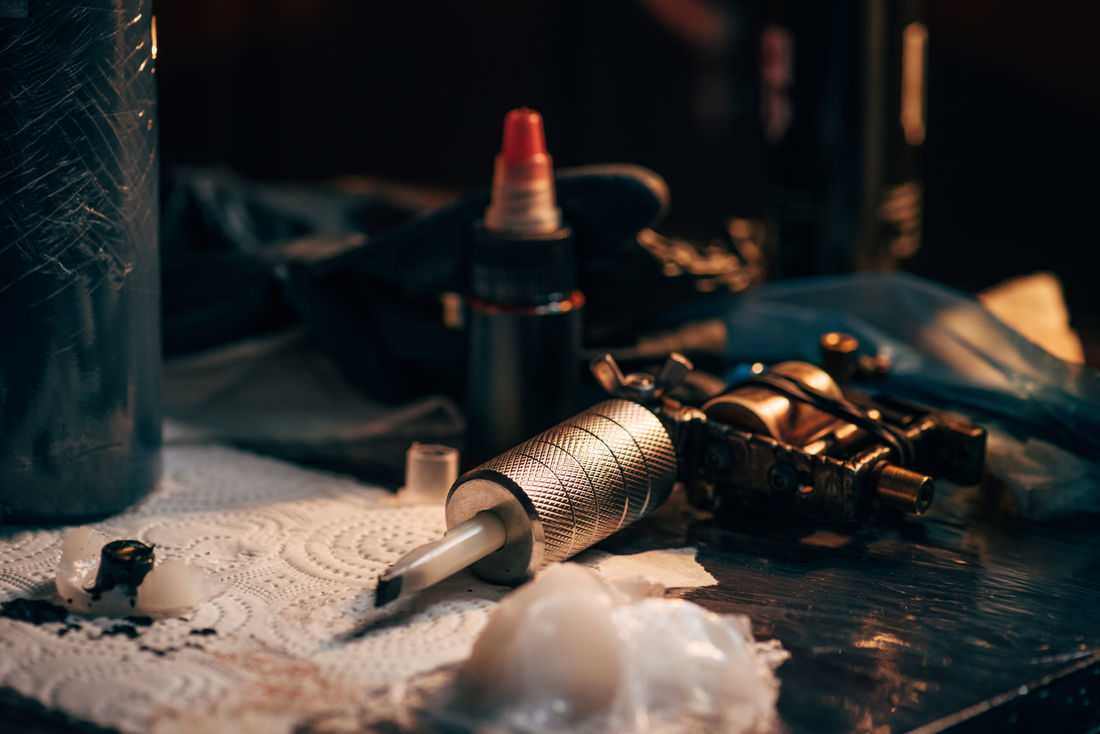If you’ve ever watched tattoo artists at work, you’ve probably wondered how that dentist drill-looking and sounding gadget actually works. Here’s the lowdown.
That drill-like object is an electric tattoo machine. It has a solid needle that moves up and down super fast – between 50 and 3,000 times per minute – to deposit ink underneath your skin (the dermis or second layer of your skin, to be precise).
Don’t worry, it won’t penetrate deeply – it only has to go a millimetre down to place a tiny bead of insoluble ink in the colours of your choice. It has to go into the skin’s second layer because dermis’ cells are more stable than those in your epidermis (your top layer of skin) and don’t peel off, so it’s more likely your tattoo will stay put forever.
The machine you see has some essential parts. The sterilised needle connects to a tube that draws the ink upwards, with a little help from an electric motor, which is controlled by your tattoo artist using a foot pedal – a bit like the one you'd find on a sewing machine.
It’s technology that’s barely changed since the 1800s when Samuel O’Reilly took a similar design Thomas Edison invented to engrave hard objects and modified it by transforming the tube system and oscillating unit so it could drive a needle.
Modern tattoo machines come in three flavours:
1. The classic magnetic coil uses an alternating electric current to turn magnets on and off rapidly to create the up/down movement. It’s loud, rattle-y and needs a lot of maintenance but tattoo artists love it because it gives you that quintessential vintage tattoo experience.
2. A rotary motor attached to a piston arm that uses an electric current to drive it and create the up/down movement. This version started out as a DIY machine in prisons and home tattoo parlours – and therefore had a reputation for lacking responsiveness. But recently they've made a comeback in modern tattoo parlours (with some tech modifications) because they're primarily silent and don't require too much maintenance.
3. A pneumatic machine, which uses compressed air to drive the piston. Super expensive and extra shriek-y with an ice-cold blast of air that washes over you with every application, you’ll only see these rarely, but they do produce lovely tattoos.
About those needles...
There are two types of tattoo needles – liners and shaders. Liners are grouped and soldered in place in a round shape and tightened, so the points are brought close together for fine work. Shaders get the same treatment but can also be fanned out into ‘magnums' or ‘mags.'
Liners and shaders work just like a paintbrush – a fine, stainless steel, paint brush. Different tattoo artists will create different configurations of needles, depending on their technique and style of tattooing.
When you’re getting a tattoo, the artist will stretch your skin, start the machine running with the foot pedal, dip the needles in the ink and pass the tip of the tube over your design. The needles inside the tube then deposit the ink into the dermis (or your second layer of skin), making thousands of tiny wounds in your skin and pushing your immune system into overdrive.
The immune system then sends out ‘macrophages’ (specialized white blood cells) to flood the area and envelop the ink particles, which paradoxically helps your tattoo become permanent and allow it to fade slightly over time.
